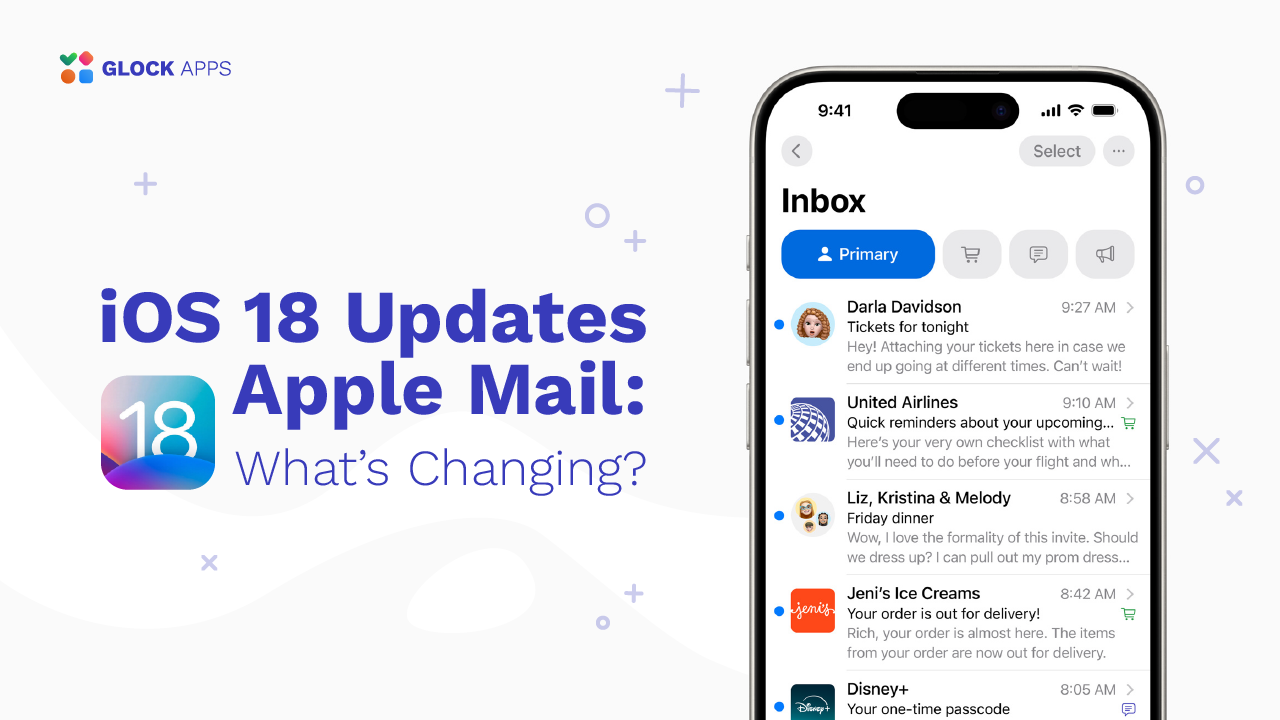Gmail vs Apple Mail: Which Email App Is Better for You?

Estimated reading time: 5 minutes
When it comes to managing emails, most people find themselves comparing Apple Mail vs Gmail. Both platforms dominate the market, but they cater to very different user needs. Some ask: Is Apple Mail better than Gmail? Should I choose iCloud Mail vs Gmail? Or is the Gmail app vs Apple Mail app comparison more relevant?
The truth is that the right choice depends on your priorities: privacy, features, integration, or cross-platform flexibility. In this guide, we’ll break down everything you need to know about Apple Mail or Gmail so you can make the best decision for your workflow.
What Is Apple Mail & Gmail?
- Apple Mail (also called the Mail app) is the default email client on iOS, iPadOS, and macOS. It supports iCloud email as well as third-party accounts like Gmail, Yahoo, or Exchange.
- Gmail is both an email service (Google’s free email platform) and an app available on iOS, Android, and the web.
So when comparing Apple Mail and Gmail, you’re looking at Apple’s clean, privacy-focused client versus Google’s powerful, feature-rich service.
User Interface and Experience
- Apple Mail App: Clean, simple, minimalistic. It feels native on iOS and macOS, with a unified inbox, smooth gestures, and polished typography. It’s designed to blend seamlessly into Apple’s ecosystem.

- Gmail App & Web: Feature-rich and functional. It shows labels, categories, and smart suggestions upfront. The Gmail web app is especially powerful for those who want deep control over inbox organization.

If you value simplicity, Apple Mail wins. If you prefer functionality and control, Gmail is stronger.
Integration and Ecosystem
- Apple Mail integrates tightly with iCloud, Notes, Calendar, and Siri. If you live in the Apple world, this feels seamless.
- Gmail works best with Google Calendar, Google Drive, Docs, and Workspace. Because your attachments and documents live in this shared ecosystem, knowing how to organize Google Drive effectively can help you keep your digital workspace clutter-free. If you’re using Android or mixed devices, Gmail is generally more convenient.
In short: Choose iCloud if you’re all-in on Apple devices, Gmail if you use multiple platforms.
Features and Organization
| Feature | Gmail | Apple Mail |
| Inbox Organization | Labels, tabs (Primary, Social, Promotions), categories, filters. | Folders and smart mailboxes, simpler sorting. |
| Search | Extremely powerful with advanced operators. | Strong Spotlight integration on iOS/macOS, but less advanced filters. |
| Multiple Accounts | Great for Gmail accounts; other providers supported but less smooth. | Handles multiple accounts of all types in one unified inbox. |
| Smart Features | AI tools, smart replies, Smart Compose, priority inbox. | Privacy-oriented features, “Hide My Email,” message blocking, improved search. |
Verdict: For power users, Gmail offers more tools. For everyday use, Apple Mail keeps things streamlined.
Tip: No matter which platform you pick, Apple Mail or Gmail, ensuring your messages land in the inbox is the real key to success. Test your email deliverability with GlockApps and get 2 free deliverability tests today.
Notifications, Sync, and Speed
- Gmail: Push notifications are fast, especially in the Gmail app. Syncing is instant across devices.
- Apple Mail: Real-time push works best with iCloud accounts. Gmail within Apple Mail can have delays due to fetch schedules.
So if speed is critical, Gmail performs better. But for Apple users with iCloud, Apple Mail works smoothly.
Privacy and Security
- Apple Mail: Strong focus on privacy. Apple doesn’t scan emails for advertising and offers features like Mail Privacy Protection and Hide My Email.
- Gmail: Excellent at spam and phishing protection, with encryption and 2FA. But some users remain wary of Google’s broader data ecosystem.
If your top concern is privacy, Apple Mail is the safer choice.
Cost and Storage
- Gmail: Free with 15GB shared across Google services. Paid upgrades available via Google One or Workspace.
- Apple Mail / iCloud Email: Free with 5GB storage (shared with iCloud services). More available with iCloud+ plans.
Both offer free tiers, but Gmail gives more storage upfront.
Conclusion
So, which should you choose?
- Choose Apple Mail if you value simplicity, privacy, and tight integration with iOS and macOS. It’s perfect for Apple users who want a clean, distraction-free inbox.
- Choose Gmail if you need advanced features, powerful search, AI tools, and cross-platform compatibility. It’s best for people who work across different devices or use Google’s productivity suite.
Both are excellent, the decision comes down to what matters more to you: privacy and design (Apple Mail) or features and flexibility (Gmail).
Whether you choose Apple Mail or Gmail, one factor matters above all: does your email actually land in the inbox? Even the most advanced email client can’t help if your campaigns end up in Spam.
That’s where tools like GlockApps come in. With deliverability testing, spam filter checks, and reputation monitoring, you can see exactly how your emails perform.
FAQ
Yes. Apple Mail is a secure, privacy-focused client with a clean design, perfect for Apple users.
Gmail, especially with Google Workspace, offers better collaboration tools for business.
The Gmail app typically delivers notifications faster, especially for Gmail accounts.
Gmail offers 15GB free, while iCloud starts with 5GB. Gmail gives more space initially.



